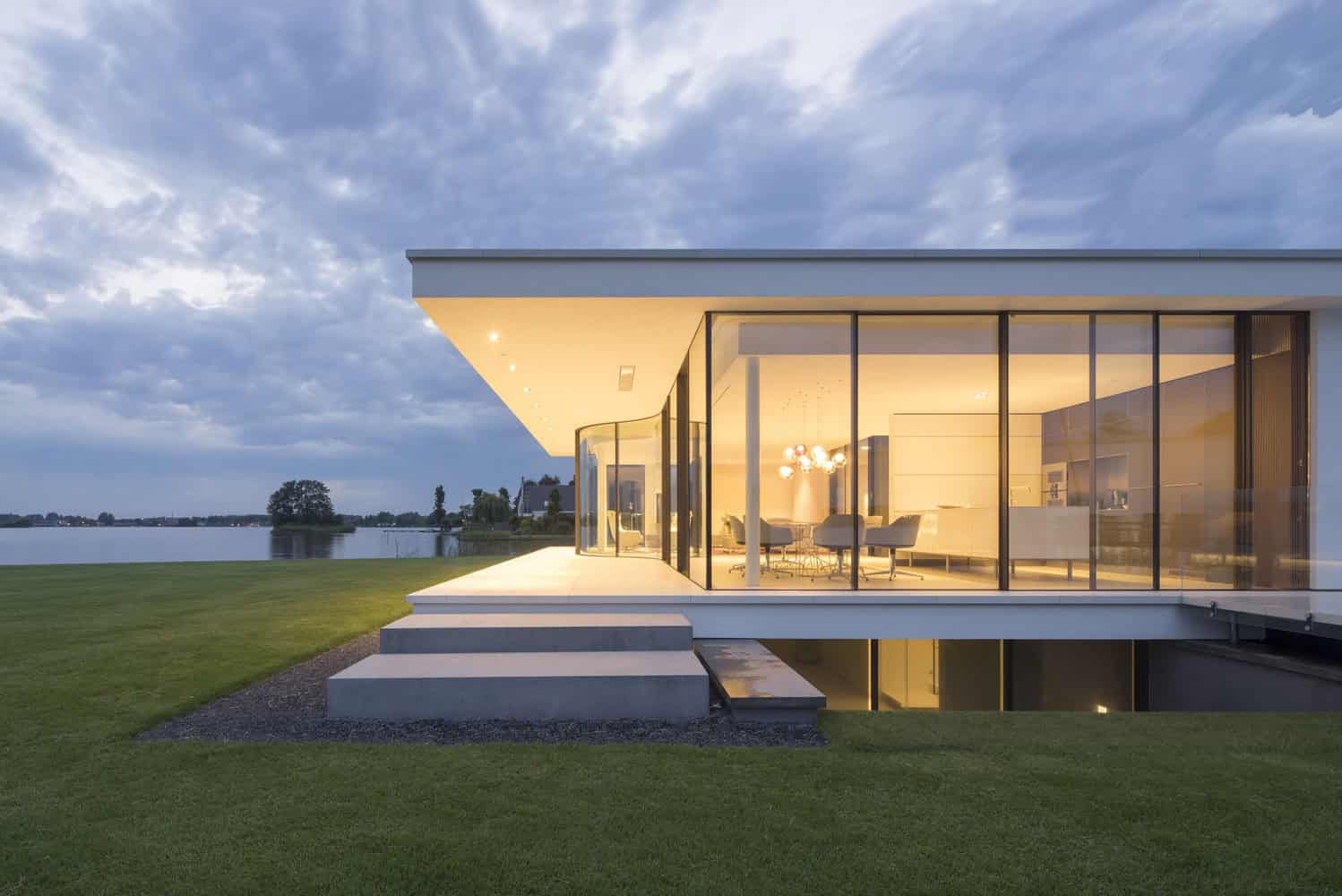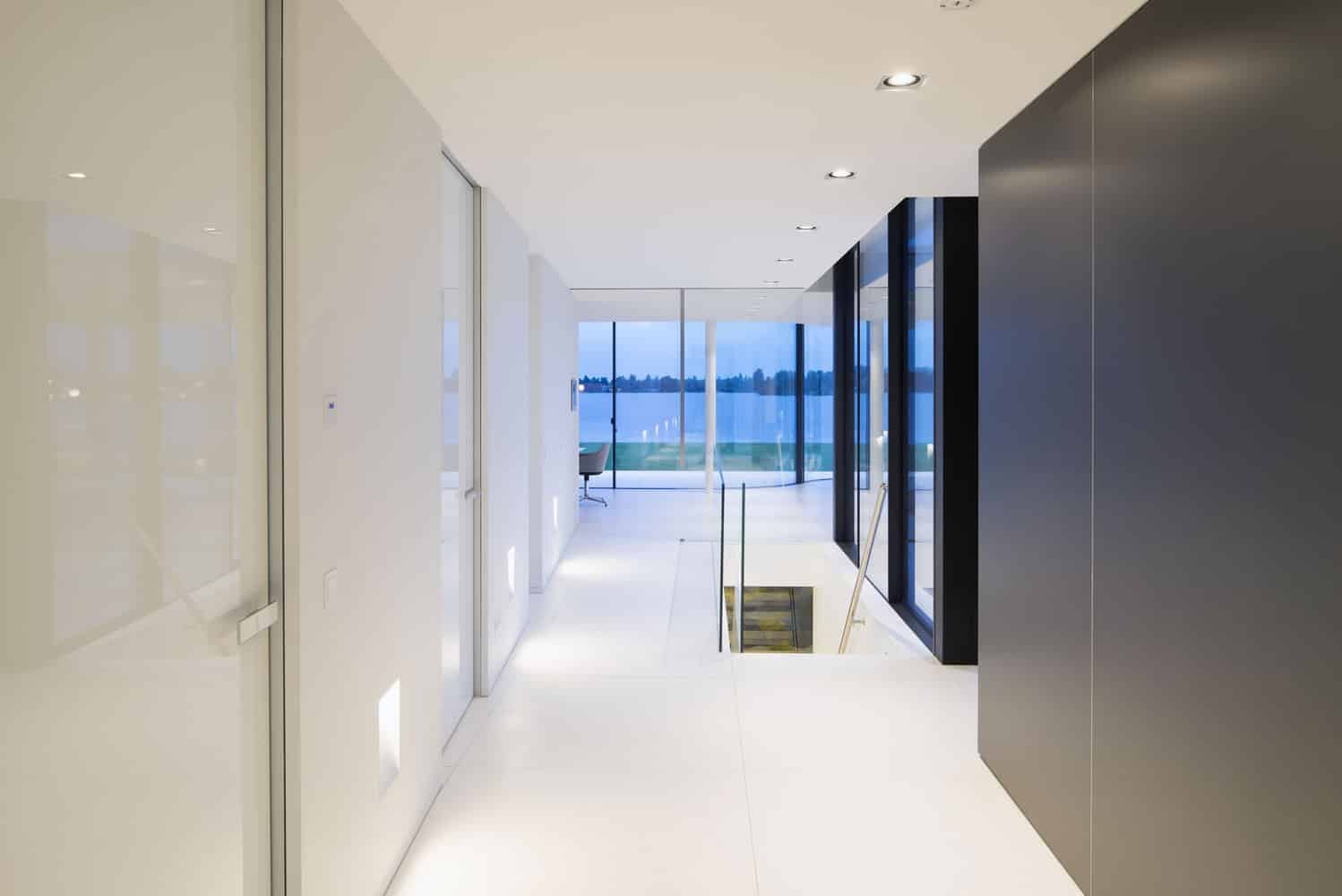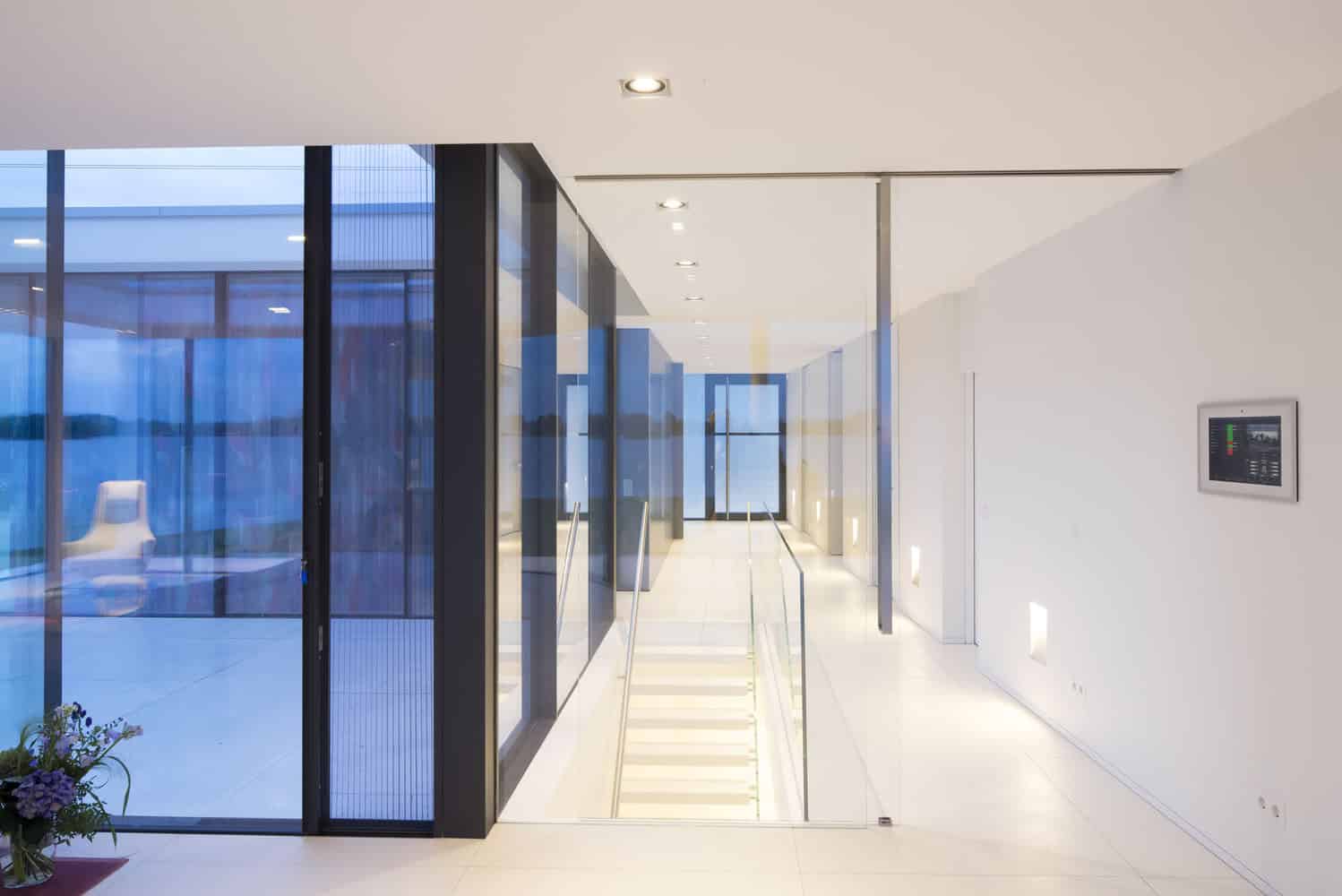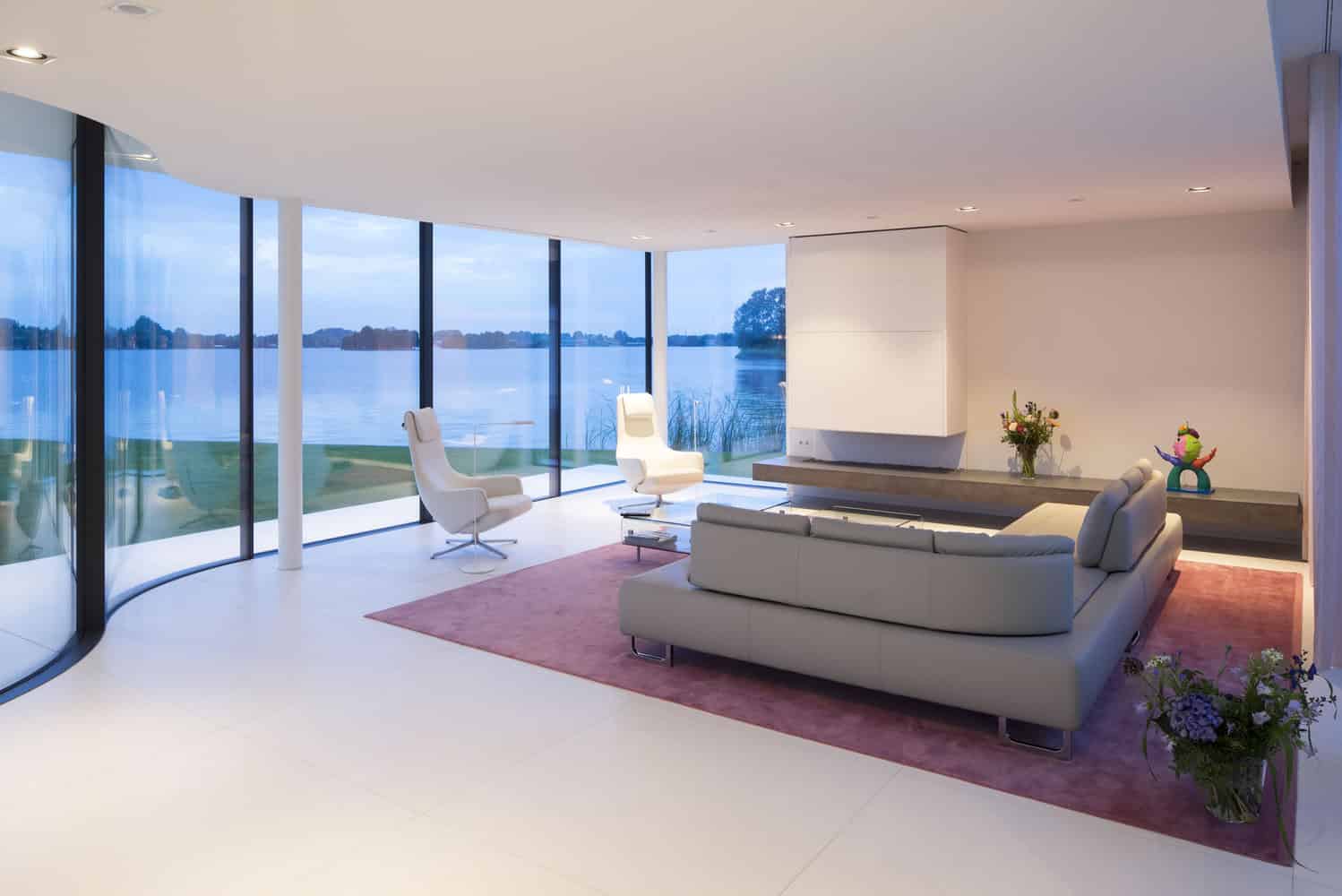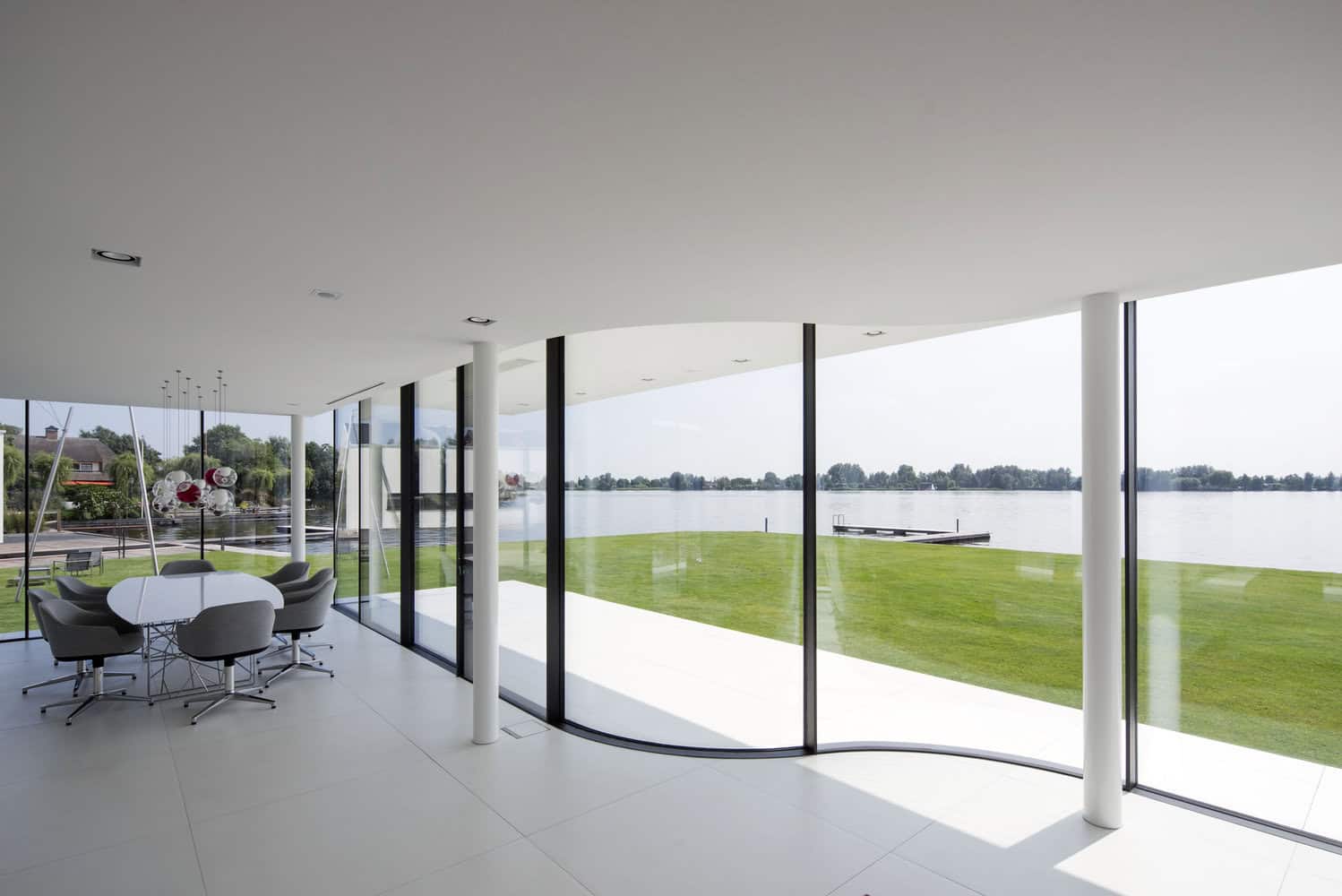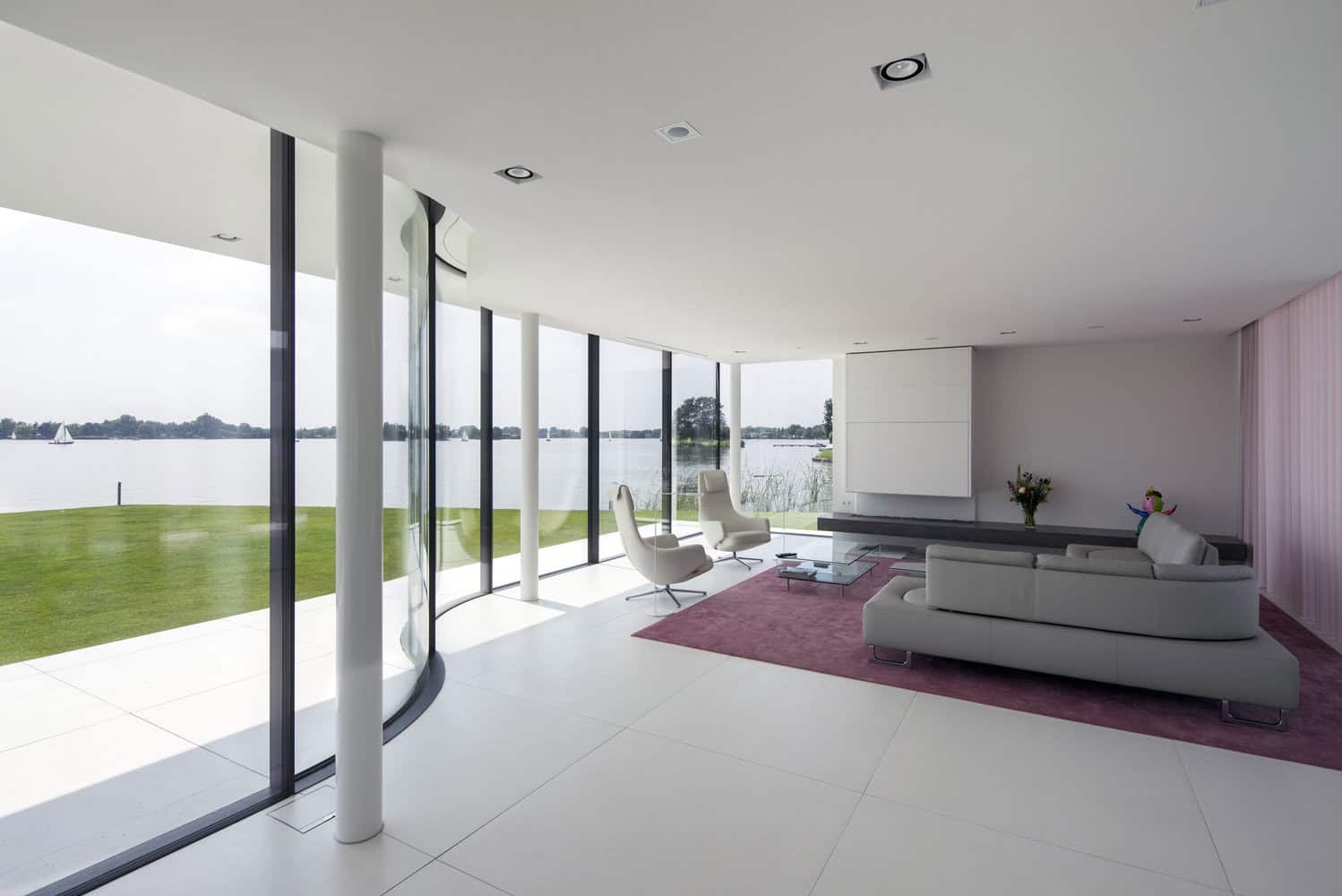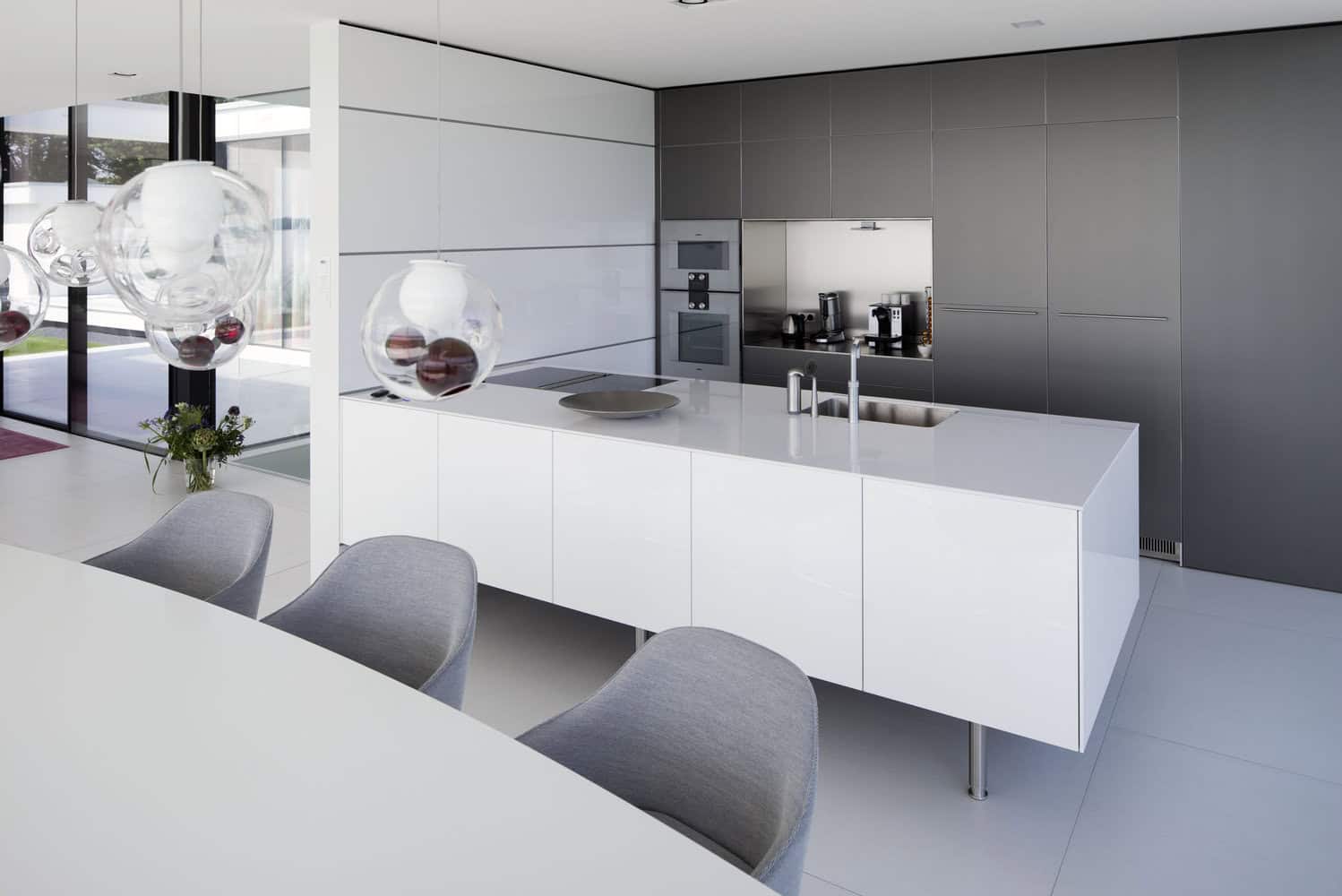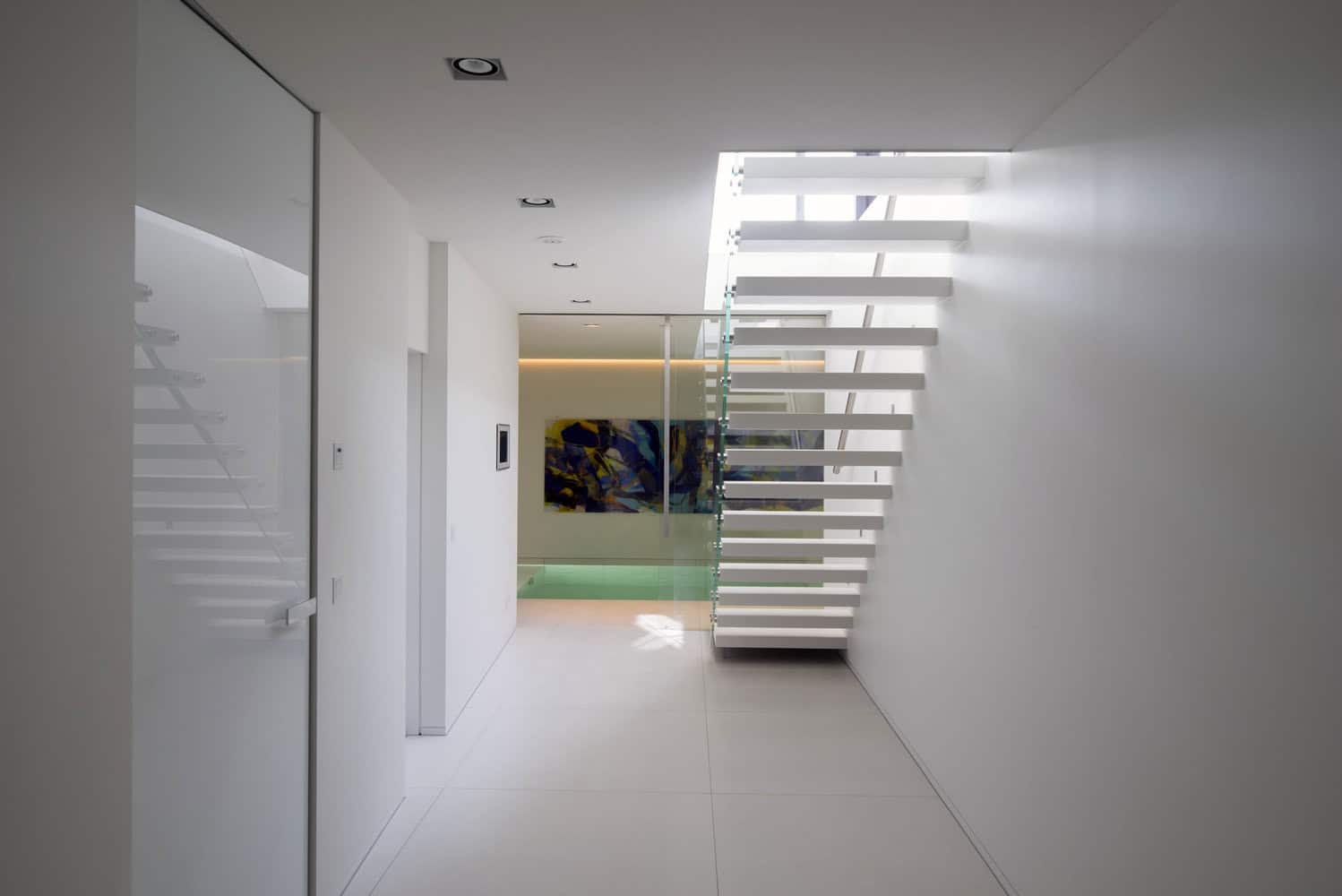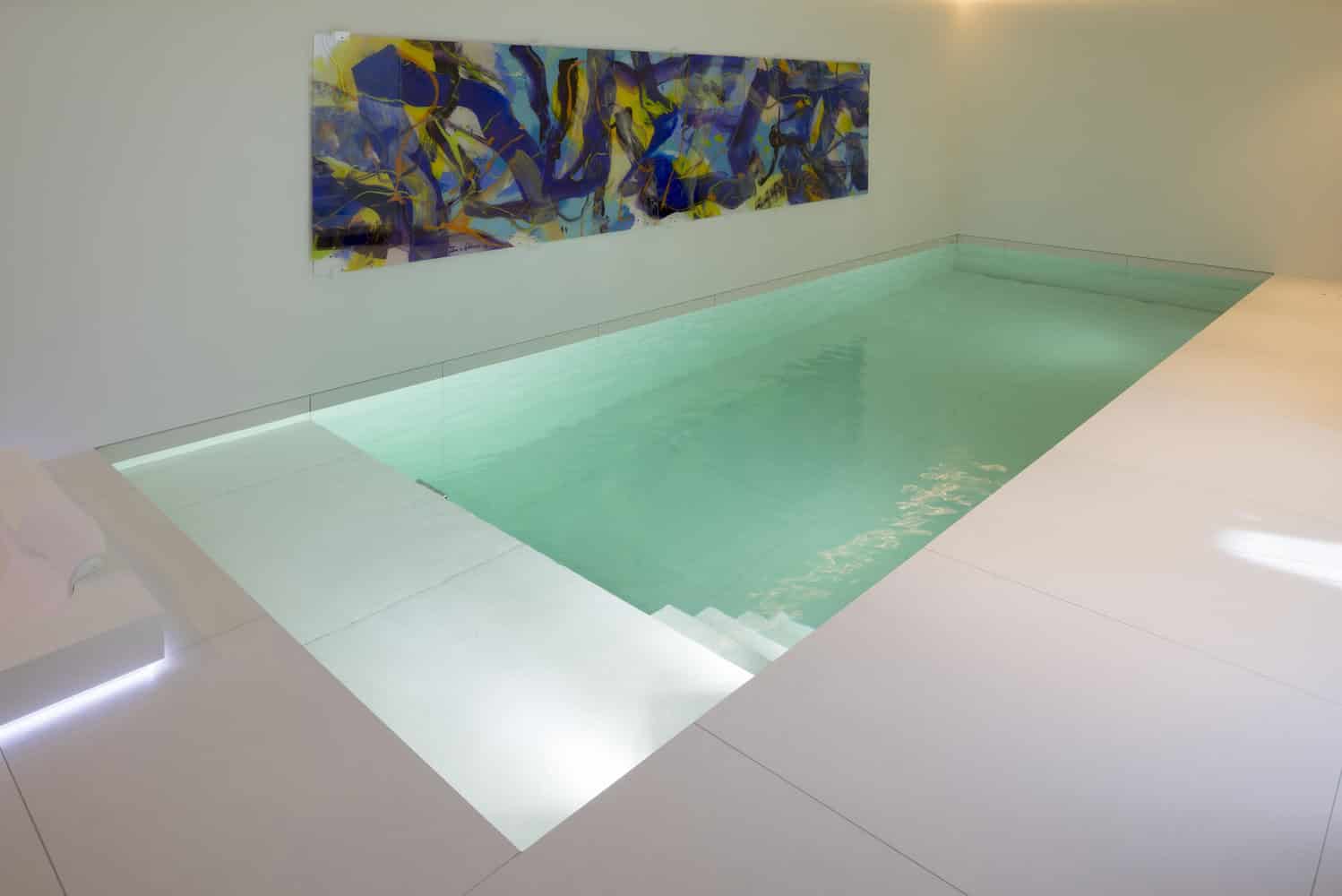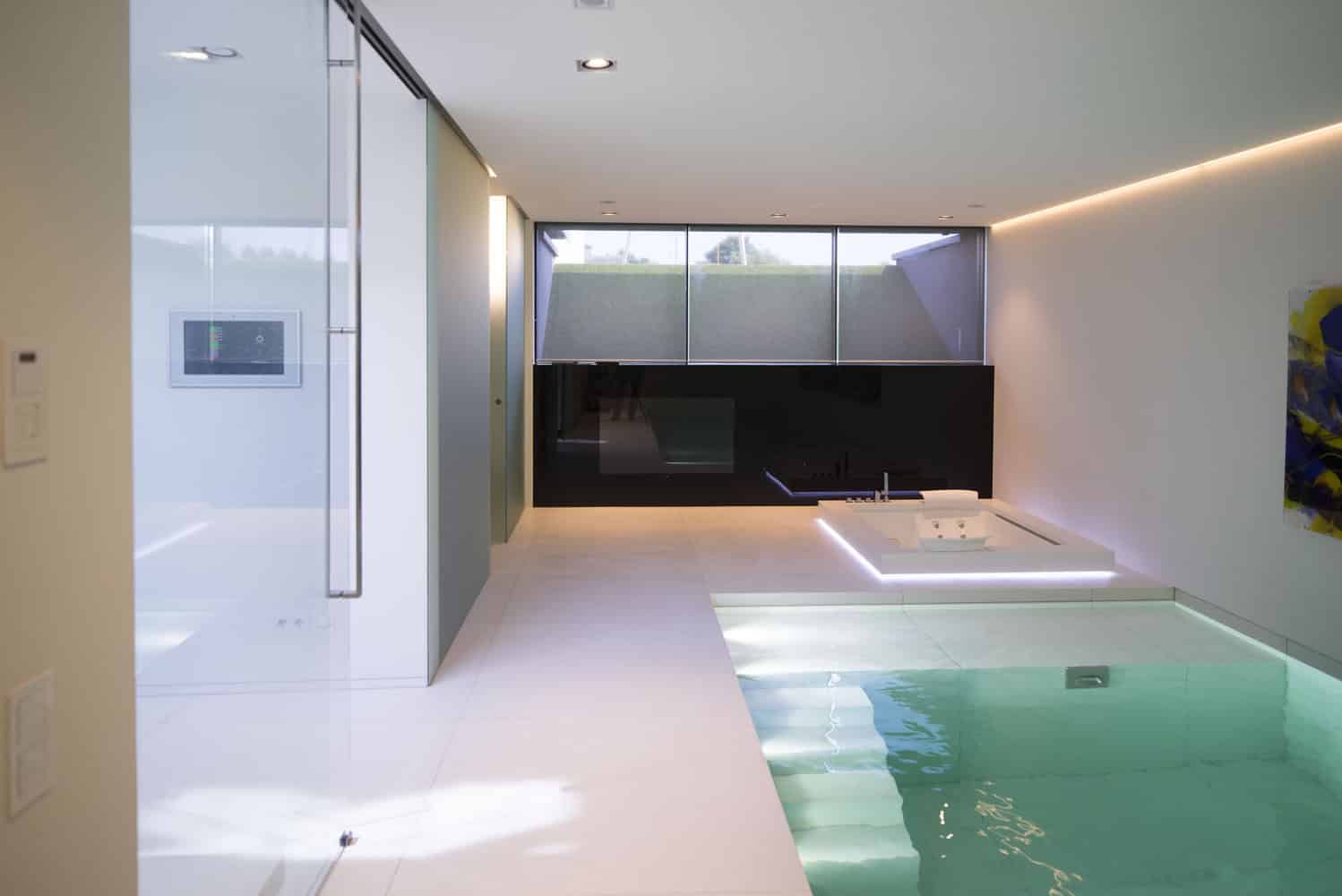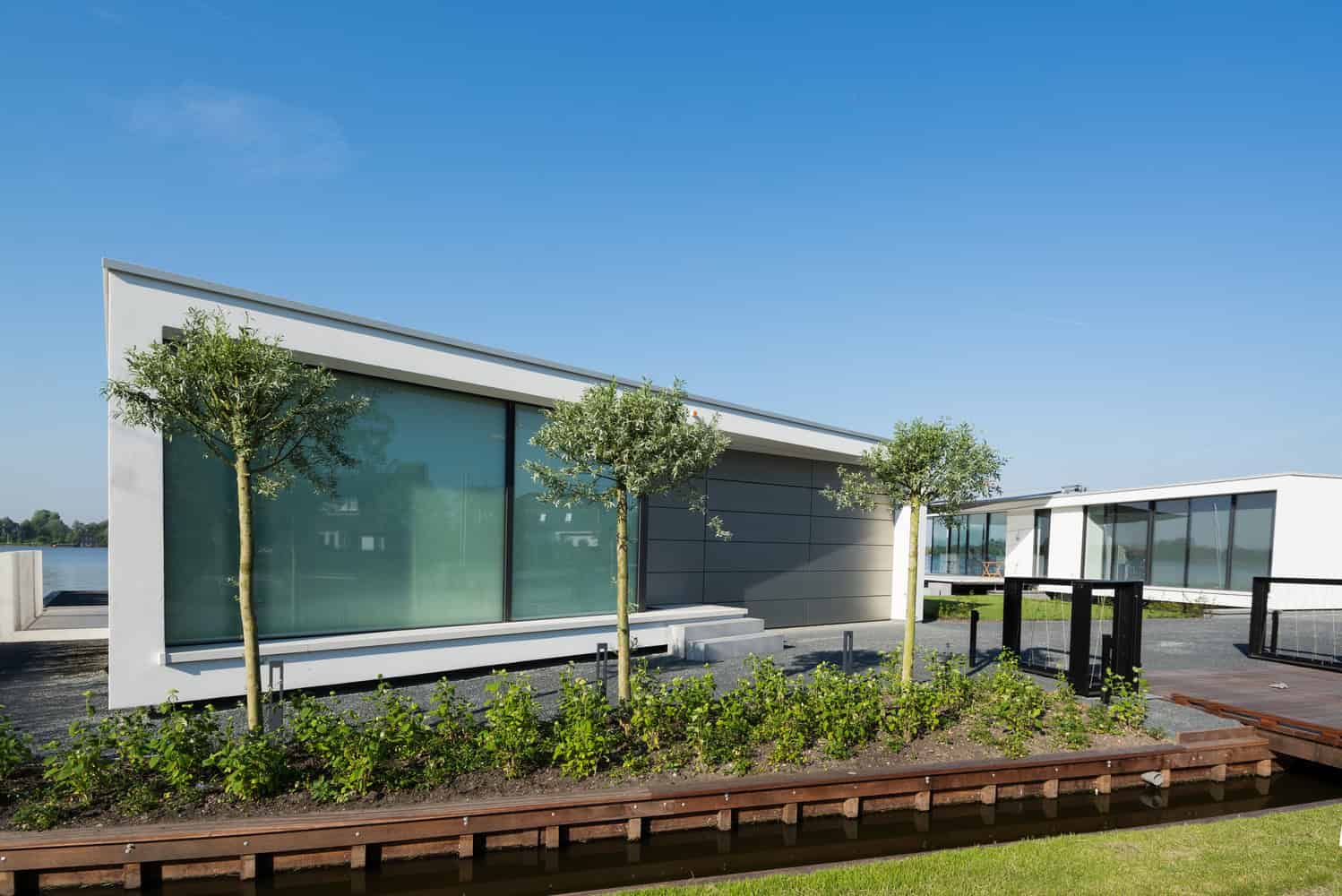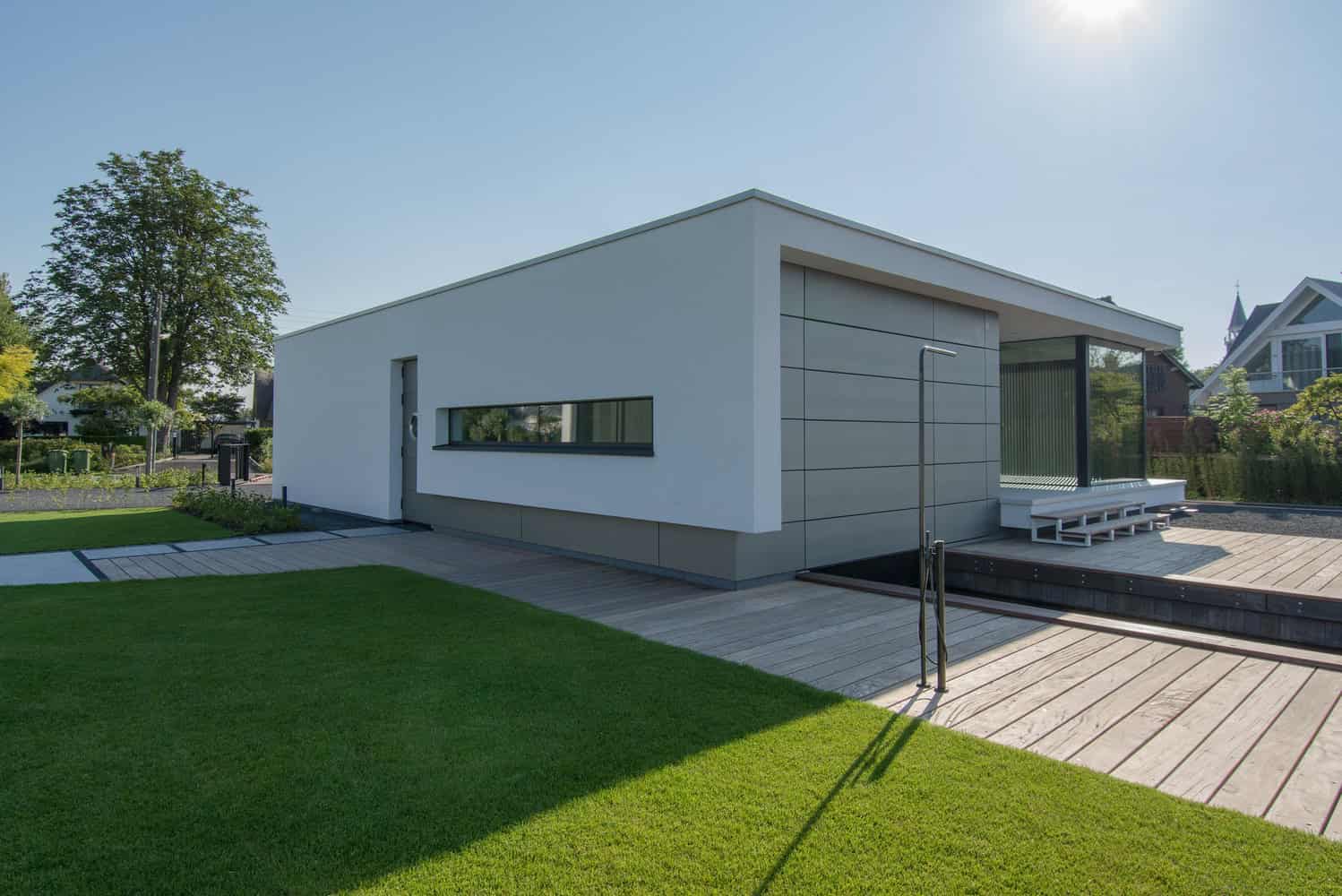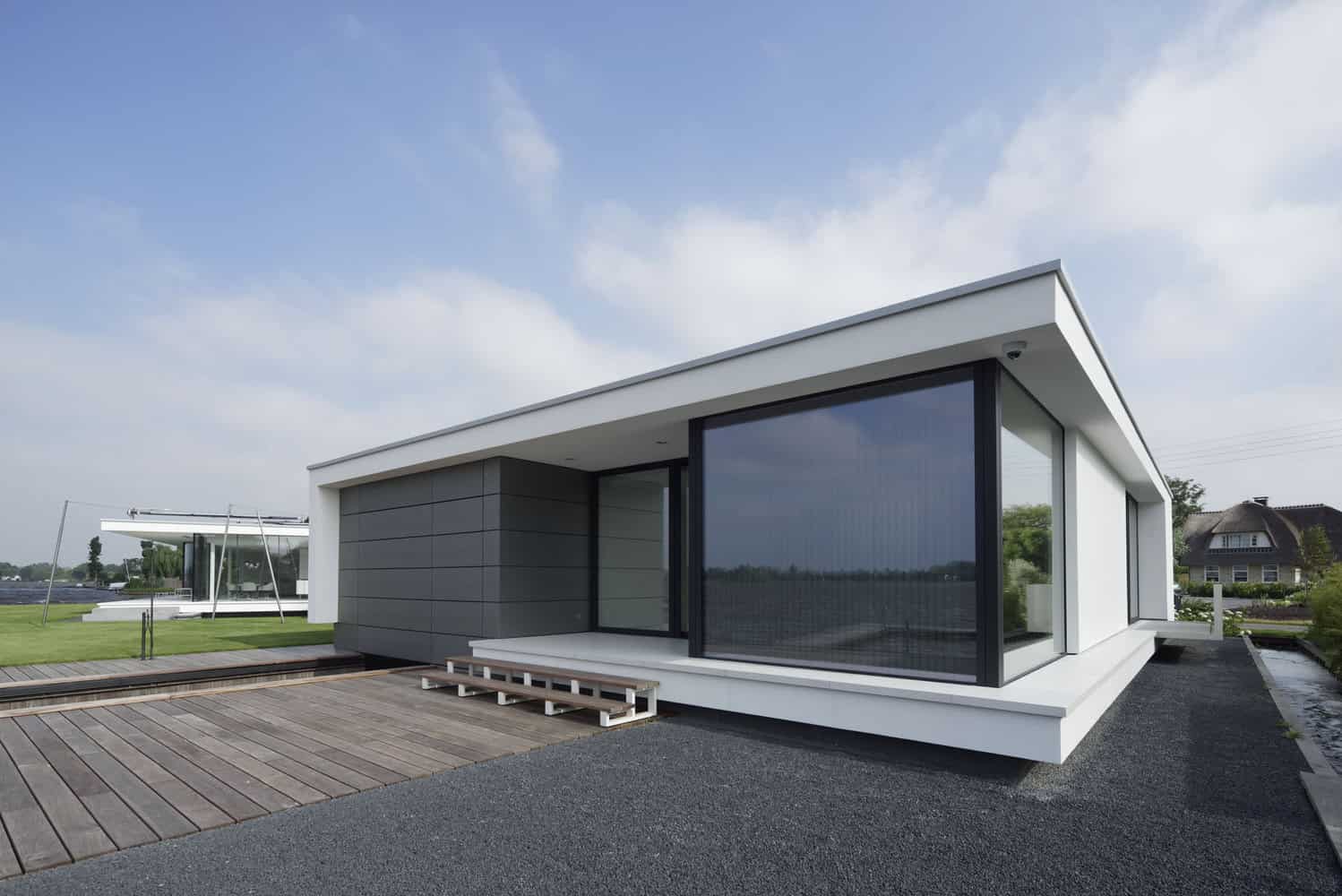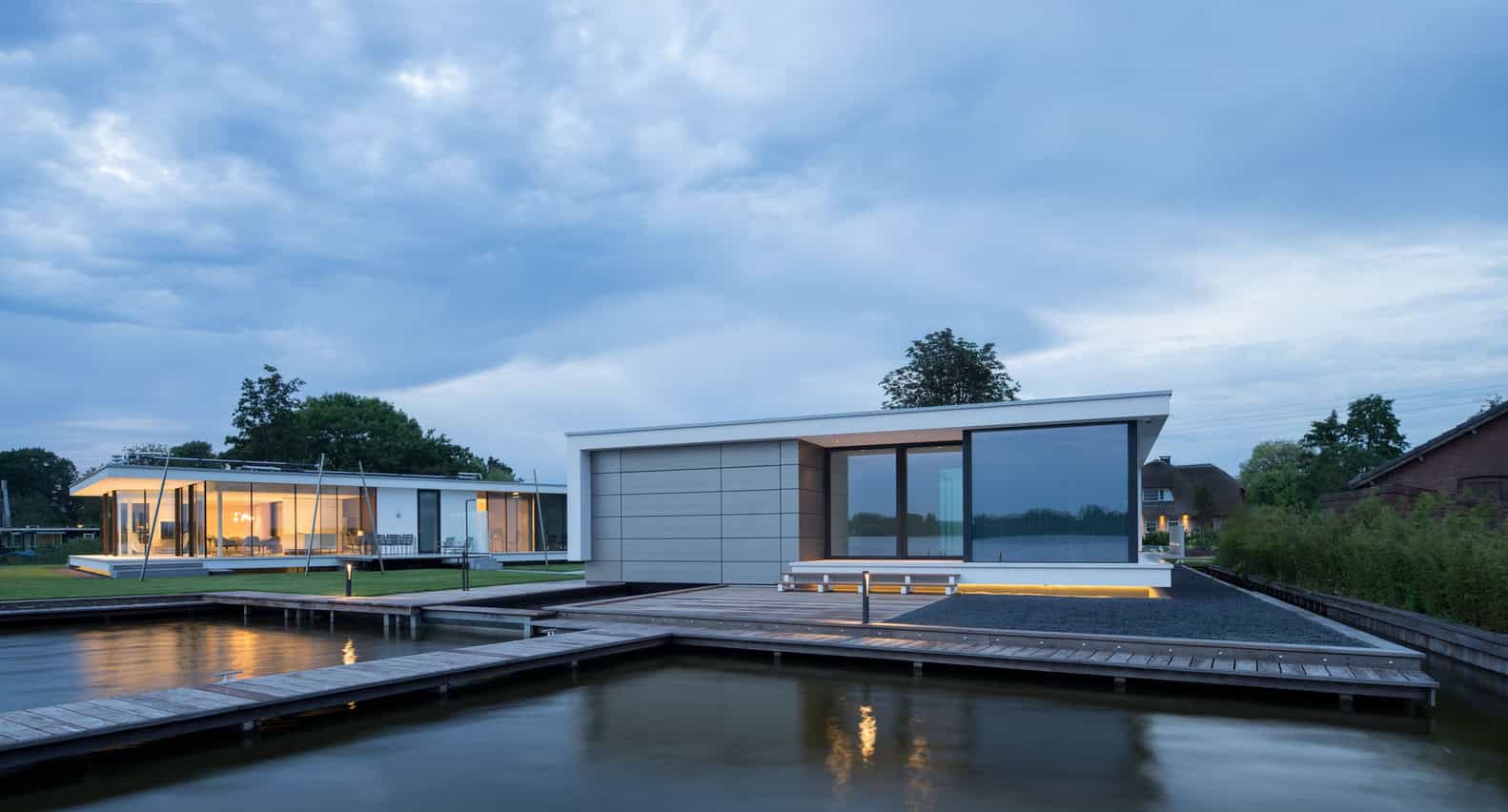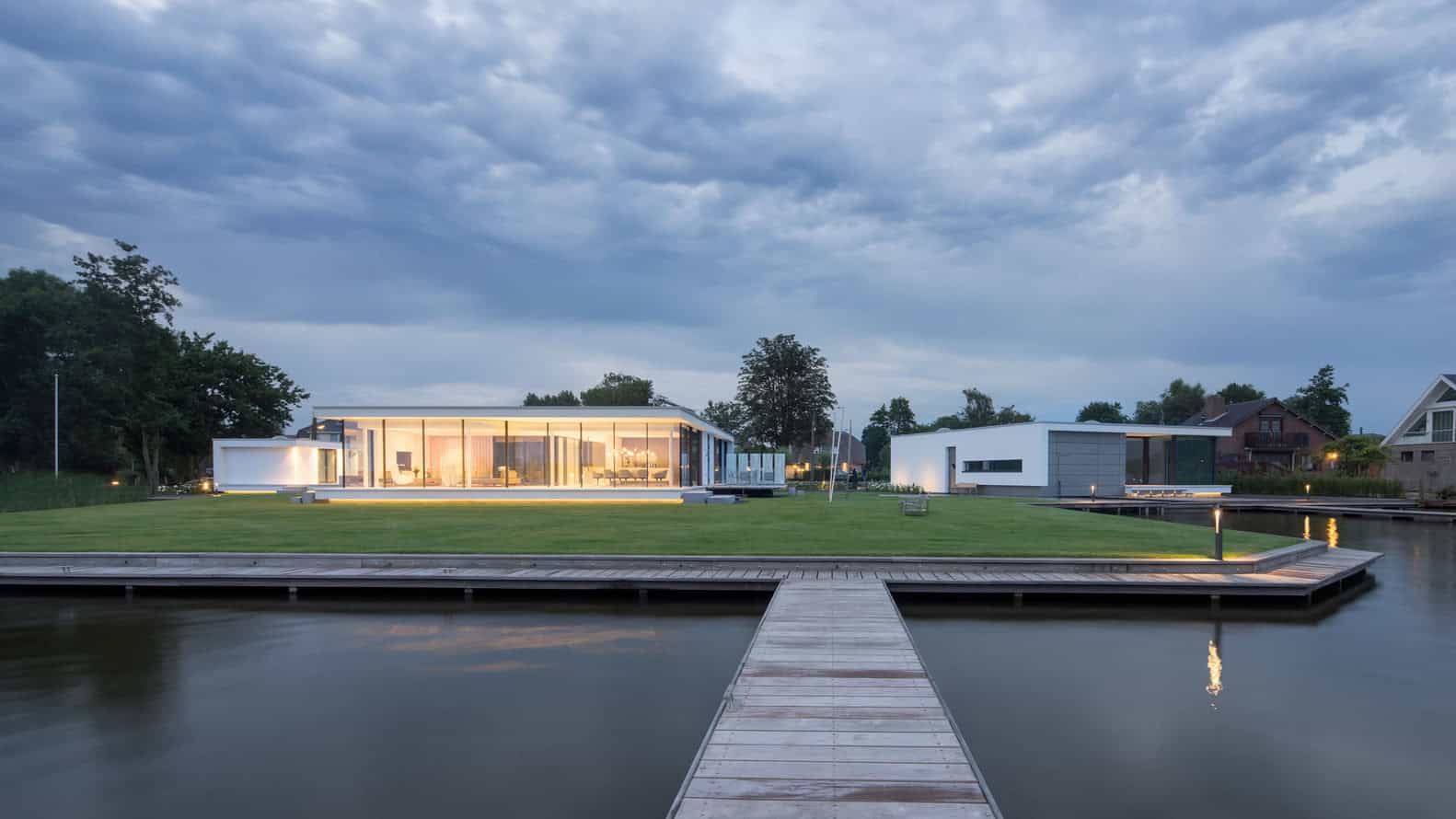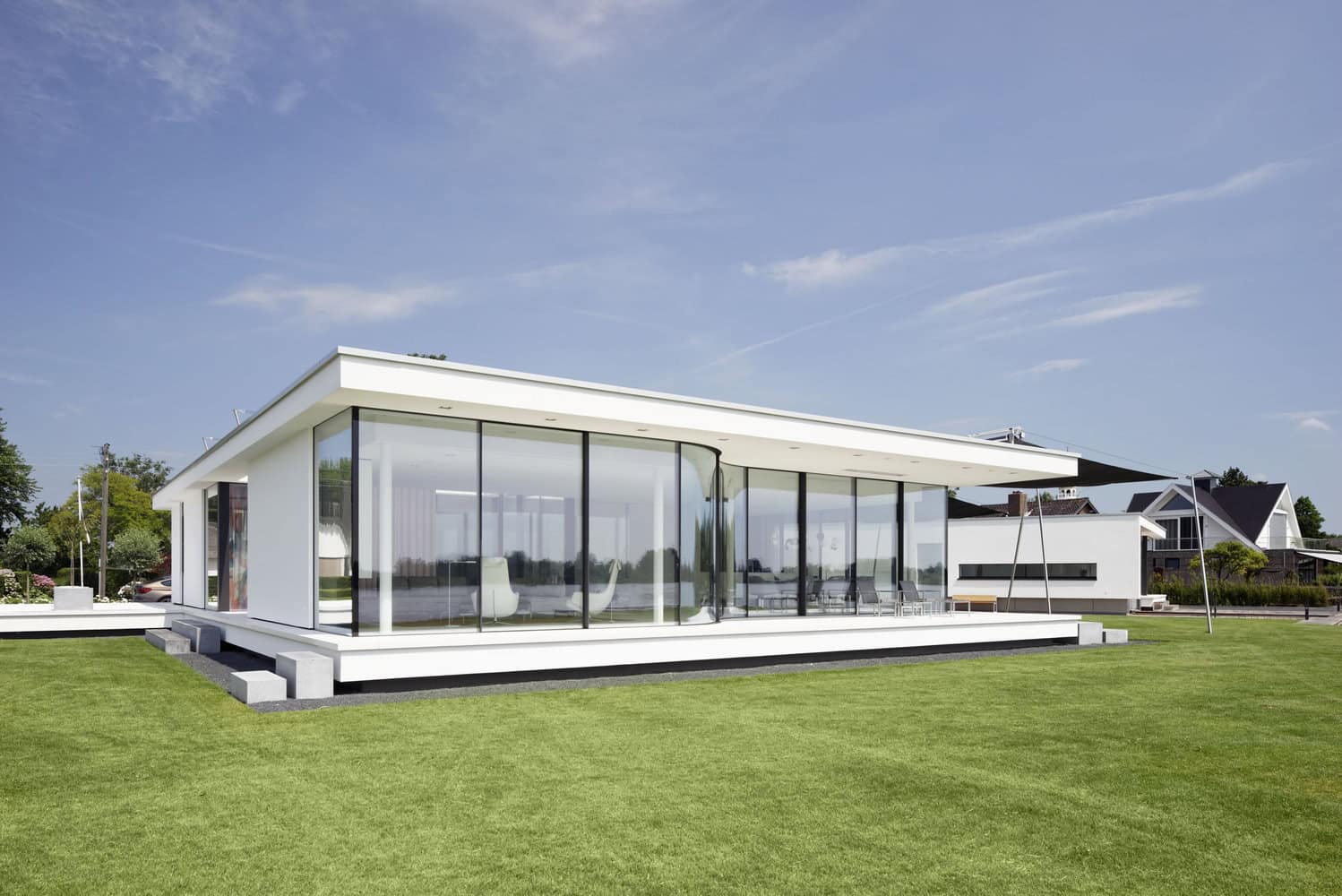
Project: G-House
Architects: Lab32 Architecten
Location: The Netherlands
Area: 6,996 sf
Photographs by: Rene de Wit
G-House by Lab32 Architecten
The G-House is a stunning modern residence located close to the Reeuwijkse Plassen river. It is a single-story minimalist residence that offers about 7,000 square feet of living spaces open to spectacular views of the Dutch countryside. It was designed by Lab32 Architecten, a studio whose work you might recognize from their amazing Villa Spee project in Haelen.

The villa is situated close to the waters of the Reeuwijkse Plassen in a dutch village consisting of not much more than a narrow through road lined predominantly by large, free-standing houses standing on ‘islands’ created by the drainage ditches of the former peatland.
The great attraction of this location lies in the vicinity of water and in the experience of this natural environment through the changing seasons. The villa’s completion represents the fulfilment of a long-held ambition of our clients, for whom a love of water has been an abiding theme of their lives.
The key starting points for the design were the natural setting, the relationship with the water, a timeless, abstract, minimalist design, and a state-of-the-art use of materials with a very high standard of detailing. In addition, the villa was required to meet high sustainability standards and to be a home for life, with provision for live-in care should that become necessary some time in the future.
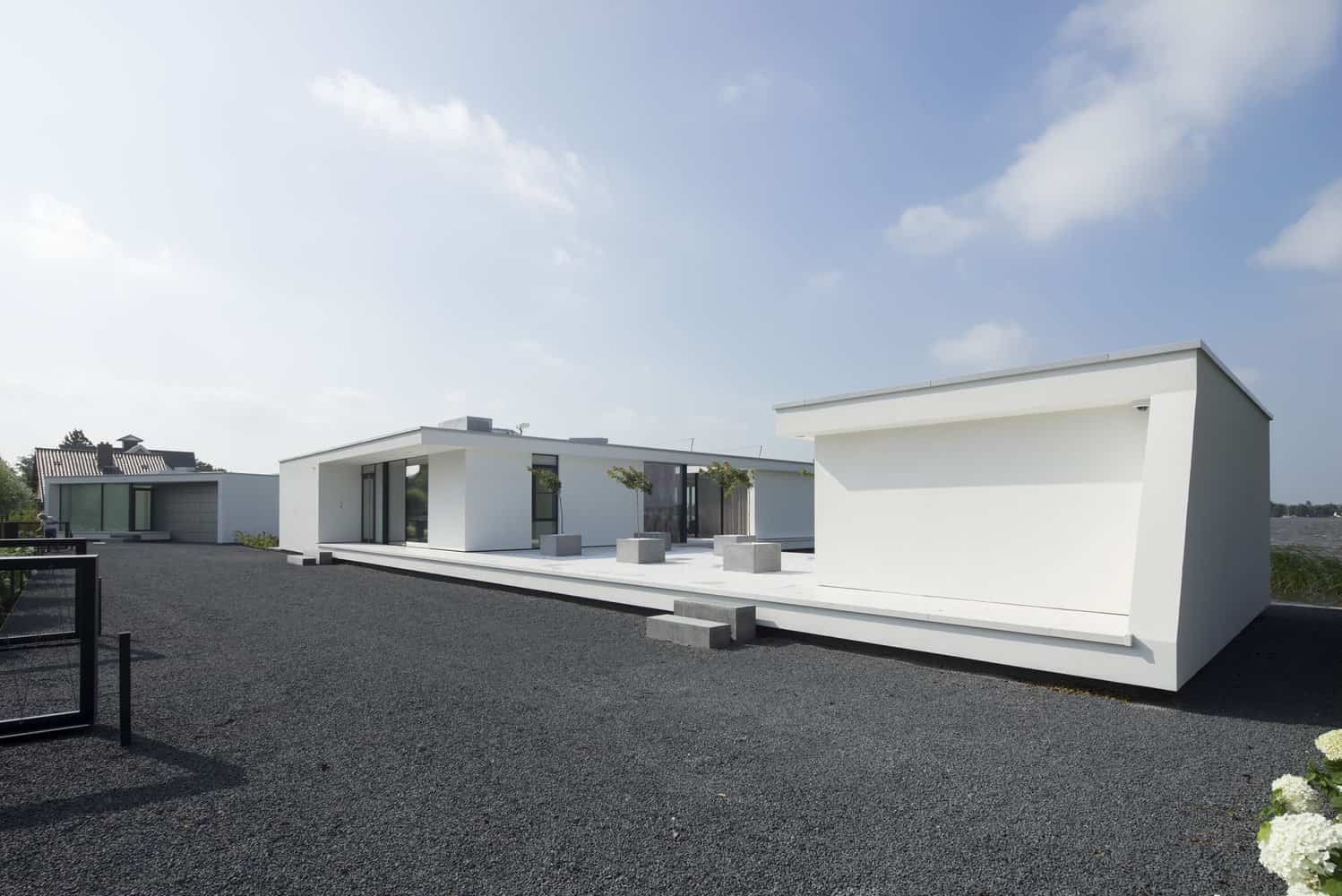
Construction on this lakeside site is subject to strict building regulations regarding the building’s footprint and height and the retention of view corridors between street and water. The outcome is an attractive ensemble consisting of the villa with external storage, partly in a basement, and free-standing guest quarters with a double garage and boathouse.
The villa’s layout is determined by the plot’s waterside location. This becomes immediately apparent upon entering the spacious central hall with its panoramic view of the lake. The main living areas, such as living room, dining room and kitchen, are on the south side, where they engage in a dialogue with the landscape via large, minimalist window units. The corner windows are designed to follow the lines of the water. The horizontal lines of the adjacent covered terrace reinforce this expansiveness, but also keep out the rays of the high summer sun, while admitting the welcome warmth of the lower standing sun in spring and autumn. Another important element in the balancing act between views and privacy is without doubt the cleverly designed patio with glass on three sides, which not only allows for visual contact between living room and street, but also provides a view of the bedroom and, vice versa, a view of the water from the bedroom. The patio is bordered by the master bedroom with walk-through closet and generous bathroom. Also on the ground floor are two studies and a second bedroom with en-suite bathroom that would in due course be suitable for a live-in carer.
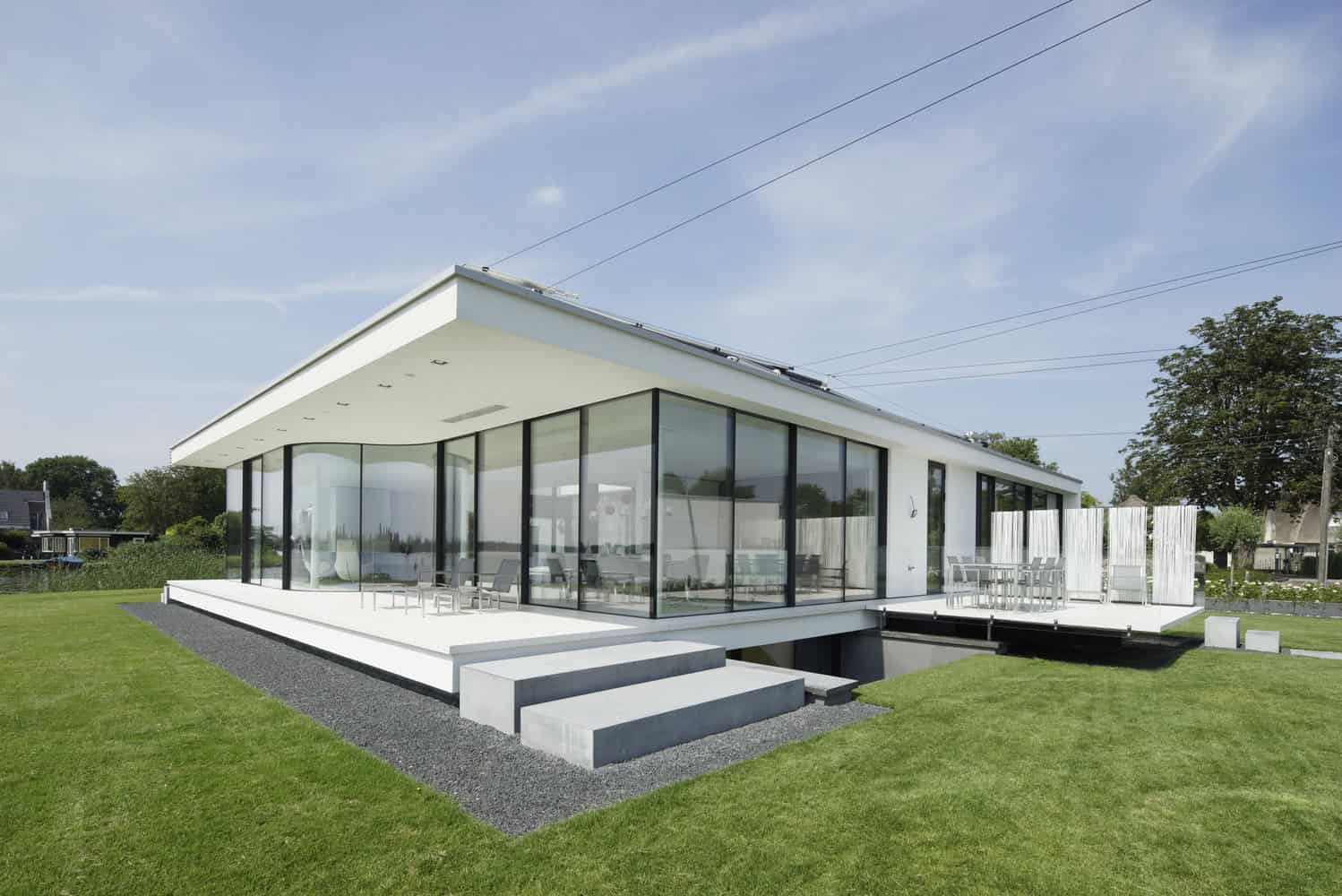
The routing and living experience in the villa is based on connecting inside and outside and making the constantly changing waterside landscape an integral part of everyday life. Thanks to the copious glass and open layout, the water has become part of life in the house.
The basement is accessible via a house lift and an open stair in the central hall. In addition to the technical equipment and storage space, it contains a third and fourth bedroom plus a wellness area complete with swimming pool, jacuzzi, sauna and a shower and toilet.
At the beginning of the build, the clients decided to buy the adjoining parcel of land on which the guest quarters were subsequently built. As well as safeguarding the privacy of the villa’s side garden, this also made it possible to accommodate the double garage and boathouse that did not fit within the maximum allowable building envelope for the villa. The rotation of the guest quarters vis à vis the villa makes the latter’s side garden more private on the street side and more open towards the water. In essence, the layout of the guest quarters emulates that of the villa by prioritising the relationship with the water.
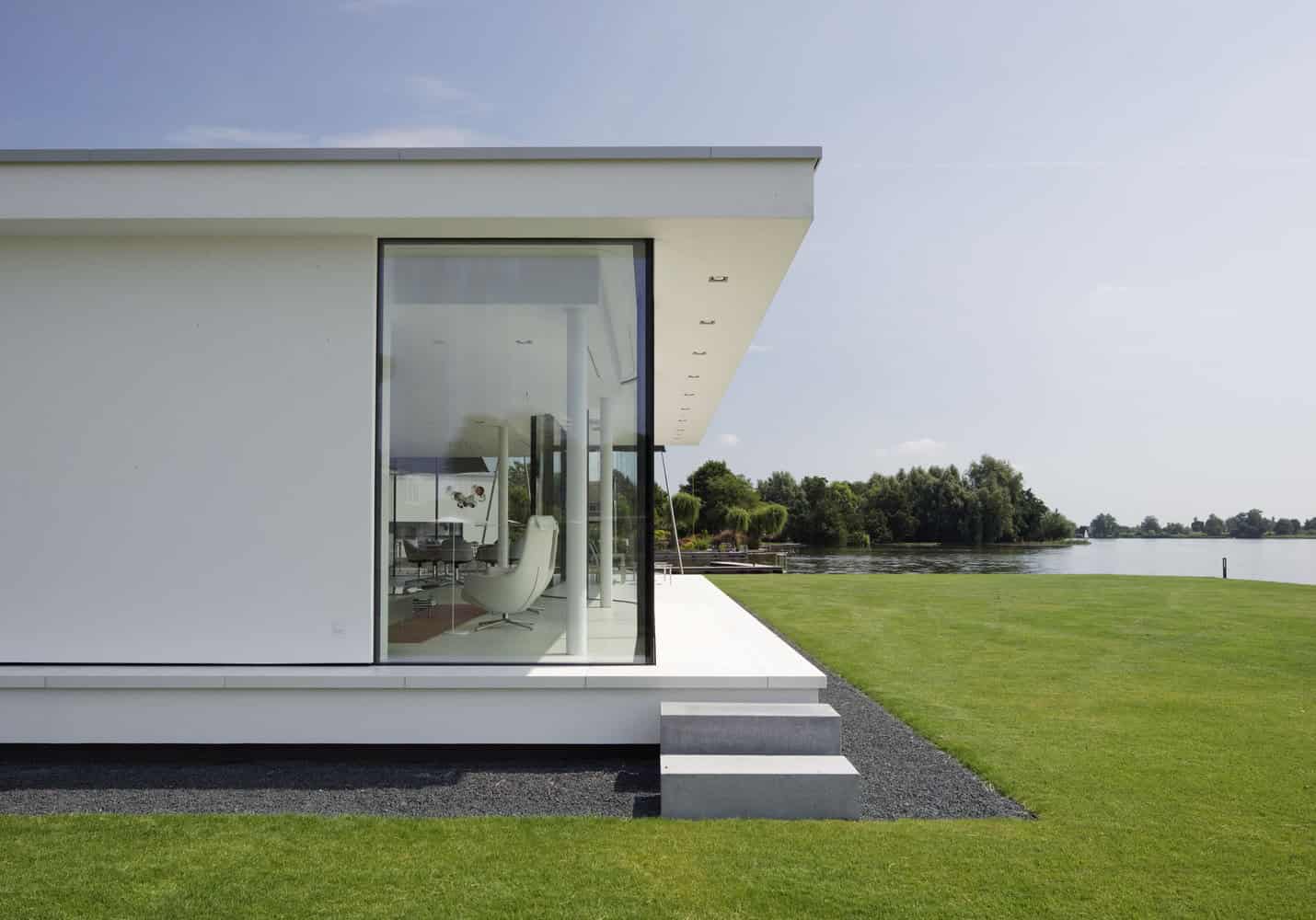
The architecture is defined by the floating, sculptural forms, the wonderful sight lines, the luxurious sense of space and the strong indoor/outdoor relationship, which is fully attuned to the location, the sunlighting and the beautiful waterside garden.
The combination of materials and the strong outlining of the large expanses of glass, as well as the overhangs and fluid curves are the focal points of this dream house. The materials are limited to a white insulated render facade system in combination with black aluminium frames, the only additional material being the pre-weathered pale grey zinc used in the guest quarters. The villa was custom-built using a traditional construction method, except for those parts of the house below ground, where the waterside location in peaty soil dictated the use of highly specialised foundation and construction techniques. The garden, including the hard surfacing and the unique, specially made entrance gates, was also designed by Lab32.
The interior is in perfect harmony with the villa and wholly in keeping with the minimalist aesthetic aspired to by the clients: clean-cut and pure design combined with high-specification materials.
The internal finishing is tautly minimalist, with pale floors that continue outside in the terraces and edgings, toughened glass doors and custom-made wall units and matching adjacent doors, partly in a robust dark aluminium with a warm look and feel, but white where they were required to blend with the wall. The kitchen was custom-designed by Bulthaup.
The bathrooms were designed by Jos van Zijl using his own line of bathroom fittings. Jos was also responsible for the tiling and glass wall coverings, the interior doors by Rimadesio, various interior fittings and, together with Boley, the gas fire. The lighting plan was designed by Lab32, with a lot of attention being paid to the integration of all the ancillary elements in the ceiling, such as speakers, ventilation slots, monitoring devices and the like. Most of the light fittings are from Deltalight.
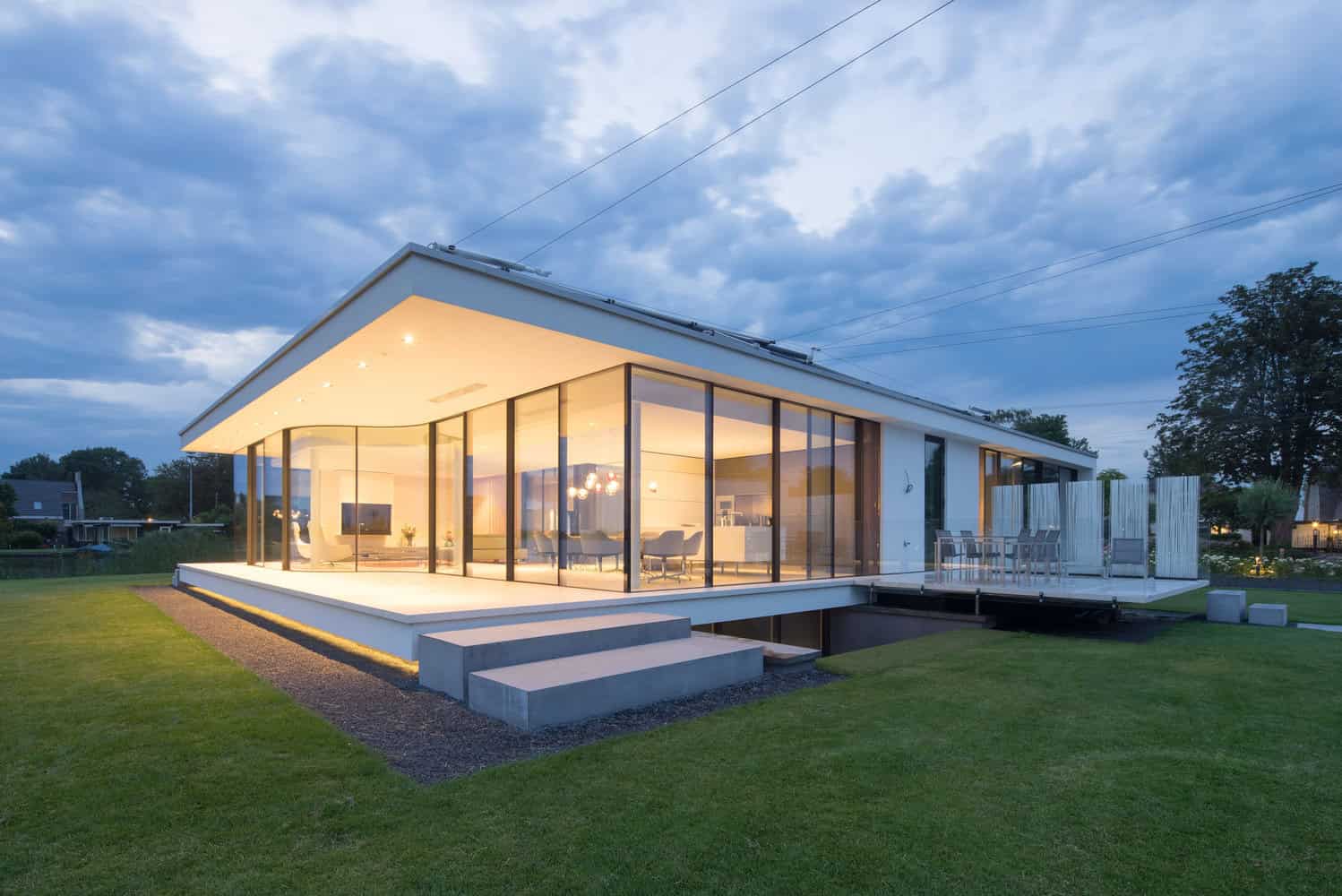
Automation and Energy
Thanks to sophisticated home automation technology, all the systems and services installed in the villa can be operated remotely by means of centrally located touch screens, individual controls in the rooms or mobile devices. The villa is equipped with a geothermal heat pump in combination with heat recovery central heating and air conditioning systems. The sustainable underfloor heating and cooling system delivers a cosy indoor climate in winter and cooling in summer and can be individually regulated in each room.
The elevations and roofs are highly insulated and the large expanses of glass are triple glazed. Covered terraces and automatic sun roofs above the morning terrace and the patio make it possible to enjoy the sun’s heat whatever the season. The continuous rooflights, which impart a special ambience to the rooms below, are fitted with solar-control glass. Optimised services and a finely detailed building shell have delivered an energy-efficient and comfortable dwelling.
Every detail has been designed and nothing has been left to chance. The result can justifiably be described as an exclusive bespoke suit that offers the ultimate in domestic comfort.
